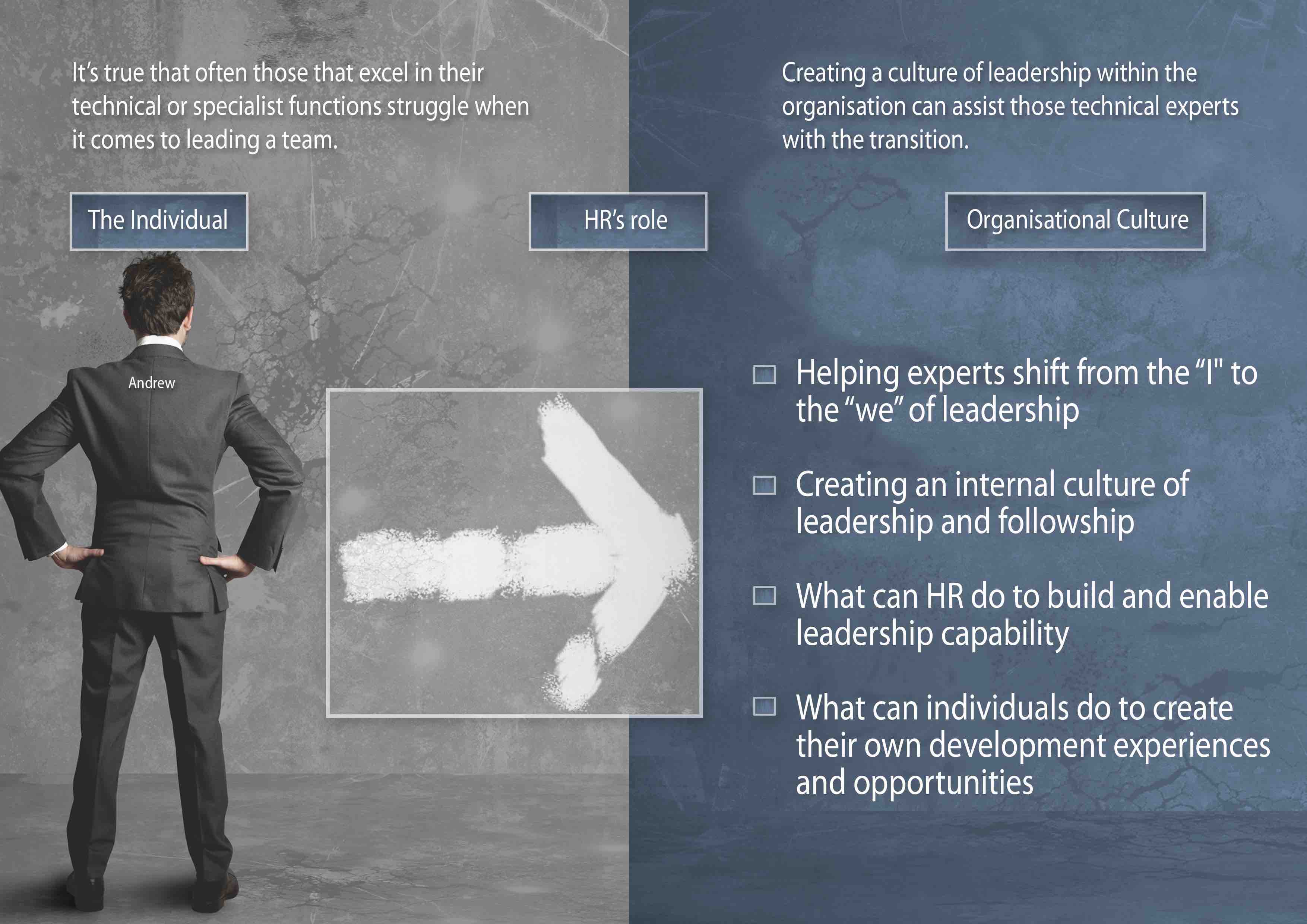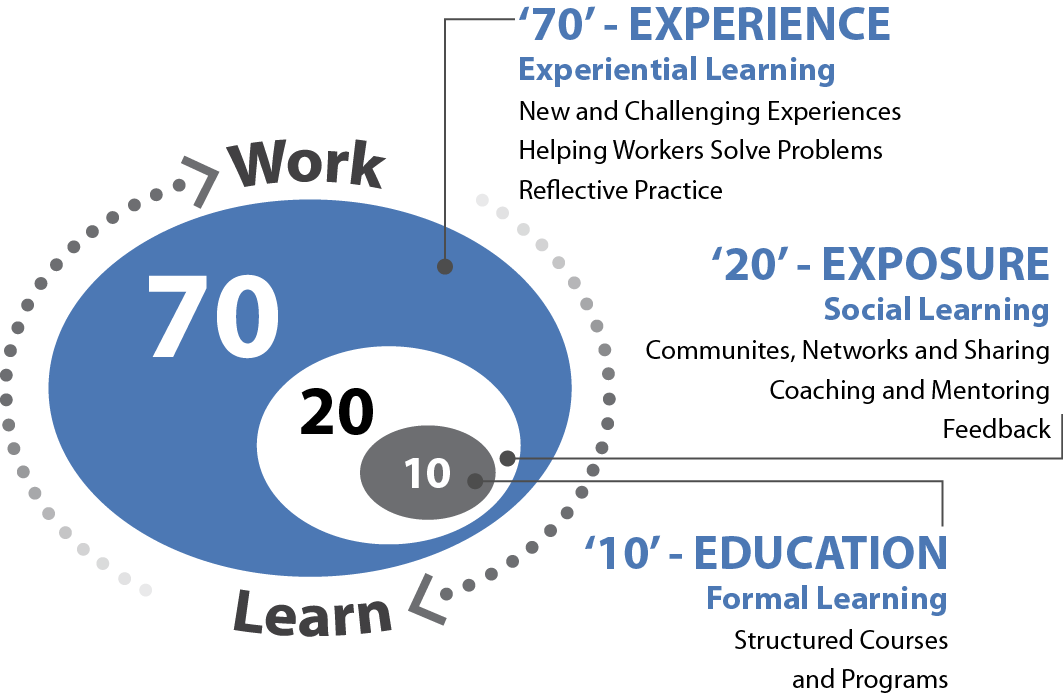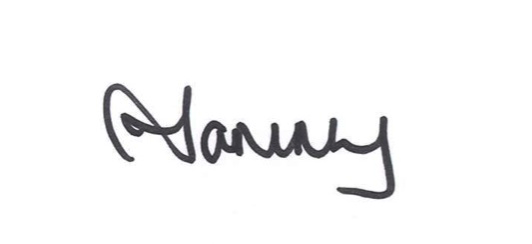 Moving from technical expert to leader
Moving from technical expert to leader
In my series on how to move from a technical expert to leader, I suggest that there are three components which as necessary for a successful transition:
- The individual and the manner in which they manage the transition
- HR and its people practises and programmes
- The culture of the organisation
In part one of this series we met “Andrew” and looked at what the individual can do to move from being a technical expert to a leader.
What can HR do to assist in the transition?
Now let’s look at what HR can do to assist the transition.
In my speech on the topic, I noted that HR is in an unique position to enable this transition by using their influence in a whole manner of different ways.
What does leadership mean for the business
Firstly, HR needs to know the business; truly know its business. It needs to understand how leadership is a driver for performance and be able to articulate this in terms that the organisation understands. It needs to be able to back up the theory with the why and how of it will make THIS business better. Not in airy fairy HR terms but in ways that make sense to the business and provide a reason for the business to embrace the approach.
Shaping the conversation
HR can assist shaping the conversation around what is leadership? And how does it differ from management?
HR can co create an organisational culture where feedback is welcomed and courageous conversations are the norm.
HR can create an environment where career conversations are the norm.
“If you give 10 managers the choice of having root canal therapy versus a career conversation with one of their people, 80 per cent are probably likely to go down the root canal therapy path“
Using its technical expertise
Critically, HR can use its technical expertise to create the competency frameworks that reflect the leadership competencies needed now and in the future.
We know from the work of Dr Lois Frankel and others that different competencies and behaviours are needed when you move from being a technical expert to that of a leader. We also know that there are different competencies that are needed at different stages of a leadership career. And that some competencies are required to be developed even if the current position doesn’t yet require it.
HR can use its technical expertise to create an environment where emotional intelligence and social intelligence are understood and developed.
HR can assist the organisation to create development programmes that work (using the 70,20,10 rule of development).

Recent research says that leadership remains the number one talent issue facing organisations around the world, with 86% rating it as important or urgent. Only 13% say they do an excellent job of developing leaders at all levels.
Enabling professional coaching and mentoring
HR can enable a professional coaching bench and explain the difference between coaching and mentoring. It can create an environment where mentoring is valued.
Create meaningful inductions and have HR processes that support and enable
HR can create inductions for technical experts who are going into new leadership positions:
- That means explaining how the role differs in competencies and behaviours from the role they have been in.
- Explaining the expectations of the role and what support is available.
- Explaining what an individual needs to do vs what the organisation will do to support them.
- Explaining how a leadership role differs from a management role.
- Explaining and discussing the relevant role charter.
HR can also create policies, procedures and practises that enable and support leadership within the business rather than inhibit and block.
All of these elements, when brought together create the environment and the system that allows leadership to flourish and technical experts to come to leadership in a manner which supports and nurtures.
What do you think? What else can HR do to support the business? And what happens when there isn’t HR within the business? What happens then? Do you have examples of where organisations are doing this really well?
In the final instalment of this series, we will talk about the organisational culture and what role that has to play.
Until next week, happy leading.


